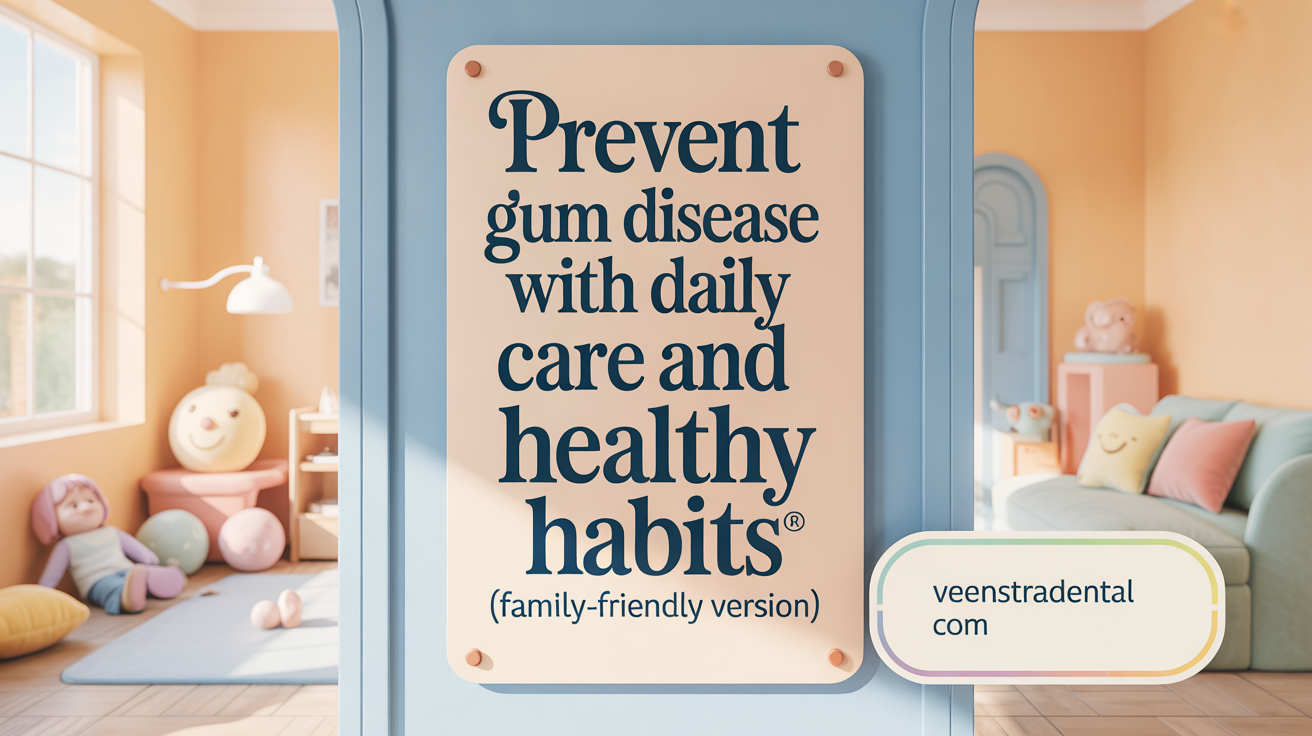Understanding Gum Disease and Its Silent Progression
Gum disease, or periodontal disease, is a widespread oral health challenge that often develops quietly, without noticeable pain. Beginning as gingivitis—characterized by red, swollen, and easily bleeding gums—it can escalate into periodontitis, causing irreversible bone loss and teeth loss if left untreated. This article explores how regular dental cleanings serve as the most effective defense against gum disease by removing harmful plaque and tartar, enabling early detection, and supporting overall oral and systemic health.
How Dental Cleanings Prevent Gum Disease
How do dental cleanings help prevent gum disease?
Dental cleanings are essential in safeguarding oral health by effectively removing plaque and tartar, which are primary contributors to gum disease. Plaque is a sticky film of bacteria that forms on the teeth after eating. If not removed through regular brushing and flossing, plaque can harden into tartar, especially in hard-to-reach areas near the gumline.
Professional cleanings involve specialized procedures such as scaling, which carefully eliminates plaque and tartar from above and below the gum line. This deep cleaning process diminishes bacterial colonies that cause inflammation and irritation of the gums.
Beyond just cleaning, dental visits enable early detection of gum issues like gingivitis, the mild initial stage characterized by redness, swelling, and bleeding gums. Catching symptoms early helps prevent the condition from advancing into periodontitis, which can lead to bone loss and tooth loss.
Routine dental cleanings also contribute to reducing bacterial accumulation and inflammation in the gums. This not only helps maintain healthier gums but also prevents the development of more severe gum disease. Regular professional care supports good oral hygiene habits at home, ensuring that bacteria do not re-establish and cause damage.
In summary, dental cleanings play a proactive role in preventing gum disease by removing harmful bacteria and debris, facilitating early diagnosis, and helping restore gum health. Maintaining this schedule is crucial for preventing tooth loss and additional health problems linked to periodontal disease.
The Essential Process and Benefits of Regular Dental Cleanings

What are the steps involved in a typical dental cleaning?
A professional dental cleaning, also known as prophylaxis, involves several important steps. The process starts with an examination where the dentist or hygienist checks for signs of gum disease, cavities, and other oral health problems. This is followed by scaling, where specialized instruments are used to remove plaque and tartar from above and below the gumline. After scaling, teeth are polished using a gritty fluoride paste to remove surface stains and smooth the tooth surfaces, making it harder for plaque to adhere.
In some cases, fluoride treatment is applied after polishing. Fluoride helps to strengthen enamel and prevent cavities. These steps contribute to maintaining overall oral health by removing harmful buildup that cannot be eliminated through brushing and flossing alone.
What does examination and screening during cleanings entail?
During routine cleanings, the dentist or hygienist also screens for early signs of oral issues, such as gum inflammation or oral lesions. They may take X-rays if needed to detect decay or bone loss, especially in areas difficult to examine visually. Early detection allows for quick intervention, preventing minor issues from becoming severe.
How do polishing and fluoride treatments benefit oral health?
Polishing not only helps in removing surface stains but also makes the tooth surface smoother, reducing bacterial plaque accumulation. Fluoride treatments enhance the teeth’s resistance to decay by remineralizing enamel. Together, these procedures help keep teeth bright, healthy, and protected from future decay.
How do regular cleanings prevent cavities and bad breath?
Removing plaque and tartar reduces bacteria that produce acids and foul odors. This prevention not only maintains fresher breath but also significantly lowers the risk of cavities and gum disease.
What advice is given on oral hygiene techniques?
Dentists and hygienists provide personalized tips on effective brushing, flossing, and using mouthwash. They also recommend lifestyle choices such as reducing sugary foods, quitting smoking, and maintaining a healthy diet to support oral health.
Why are regular dental cleanings important?
Regular cleanings are essential for maintaining good oral health. They help remove plaque and tartar that daily brushing and flossing may miss. This ongoing care detects early problems, preventing gum disease and tooth decay. The American Dental Association recommends visiting the dentist at least twice a year, with more frequent visits if you are at higher risk. These routine visits not only keep your smile looking bright but also contribute to overall health by reducing the risk of systemic conditions linked to gum disease.
Deep Cleaning: A Targeted Approach for Advanced Gum Disease

When is deep cleaning necessary?
Deep cleaning, also known as scaling and root planing, becomes crucial when signs of advanced gum disease, such as periodontitis, are present. Dentists recommend this procedure when there are deep gum pockets surpassing 4 millimeters, persistent inflammation, bleeding gums, or visible bone loss on dental X-rays.
During routine check-ups, if inflammation doesn’t subside with regular cleanings, or if bacteria and tartar have accumulated below the gum line, deep cleaning is the next step. This targeted treatment helps arrest the progression of gum disease and preserves the integrity of both gum tissue and supporting bone.
Scaling and root planing explained
Scaling involves the meticulous removal of plaque and tartar from above and below the gumline using specialized instruments. Root planing smooths the surfaces of the roots of teeth, preventing bacteria from adhering and facilitating gum reattachment.
These procedures are often performed together in one session or multiple visits, depending on the severity of the periodontal condition. Modern technologies, like ultrasonic scalers, make the process more comfortable and effective, ensuring thorough cleaning.
Benefits of removing below-gumline plaque and tartar
Removing deposits beneath the gumline reduces bacterial colonization, inflammation, and bleeding. It prevents the formation of deep pockets that harbor harmful bacteria and toxins, which cause gum recession and bone destruction.
By eliminating these bacteria, deep cleaning diminishes the ongoing infection, allowing tissues to heal. It also minimizes bad breath caused by bacterial growth, improving overall oral hygiene and confidence.
Promotion of gum reattachment and inflammation control
One of the main goals of deep cleaning is to promote the reattachment of the gums to the teeth. Smoothing the root surfaces encourages healthy tissue to rebind securely, reducing space for bacteria and lowering inflammation.
Controlling inflammation is vital, as chronic inflammation can lead to irreversible damage, including bone loss. Regular deep cleaning sessions help maintain this balance and support the natural healing process.
Role in preventing tooth loss
If untreated, gum disease can cause significant destruction of the supporting structures of teeth, ultimately leading to tooth loss. Deep cleaning is a preventive strategy that addresses the root causes of periodontal deterioration.
By eliminating bacteria and toxins and promoting tissue healing, deep cleaning safeguards the stability of teeth. It preserves the jawbone and prevents the need for more invasive procedures such as surgery or tooth extraction.
Why do dentists advocate for deep cleanings?
Dentists advocate for deep cleanings, also known as scaling and root planing, to remove plaque, tartar, and toxins from below the gum line. This procedure is essential when there is significant bacteria buildup or periodontal pockets, which can lead to gum disease.
Deep cleaning helps to eliminate harmful deposits, reduce inflammation, and promote the reattachment of gums to the teeth. By addressing these issues early, it prevents the progression of gum disease and reduces the risk of tooth loss. Overall, deep cleanings play a crucial role in maintaining oral health and preventing more serious dental problems.
Early Detection and Continuous Care: Safeguarding Oral and Overall Health

Why is early diagnosis of gum issues important?
Regular dental cleanings serve as a frontline defense against gum disease, which often develops silently without noticeable pain. During routine visits, dentists can detect early signs of gum problems, such as slight redness, swelling, or bleeding, before they advance to more severe stages like periodontitis. Catching these issues early allows for simple yet effective treatments, preventing tooth loss and severe infections.
How do screenings help prevent cavities and oral cancer?
Besides checking for gum disease, dental check-ups include screenings for cavities and oral cancers. Using specialized tools and sometimes X-ray imaging, dentists can identify early signs of decay or suspicious lesions. Early detection of such issues greatly improves treatment success and can potentially save lives by catching oral cancers in the initial stages.
What is the link between gum disease and overall health?
Many systemic health issues are linked to poor gum health. Research shows that untreated gum disease can contribute to heart disease, stroke, diabetes, and respiratory problems. The inflammation caused by bacterial infections in the gums can spread to other parts of the body, exacerbating these conditions. Maintaining healthy gums through regular cleanings directly supports overall well-being.
How does personalized care and risk assessment enhance prevention?
Every patient has unique risk factors for gum disease, such as genetics, smoking, hormonal changes, or health conditions. Dentists evaluate these factors during check-ups to tailor preventive strategies like more frequent cleanings or specific home care advice. This personalized approach optimizes oral health outcomes and reduces the likelihood of disease progression.
Why are regular check-ups essential for overall oral health?
Biannual visits are vital for continuous monitoring and early intervention. Dentists use advanced diagnostics and professional cleaning techniques to remove plaque and tartar that home brushing cannot eliminate. These regular assessments help detect subtle changes early, educate patients on proper hygiene practices, and reinforce proactive health management.
| Key Aspects | Details | Additional Importance |
|---|---|---|
| Early Detection | Recognizing signs of gum disease, cavities, and oral cancer early | Prevents advanced disease, saves teeth, improves treatment outcomes |
| Systemic Links | Gum health affects heart, diabetes, respiratory health | Enhances overall health and reduces risk of systemic conditions |
| Personalized Care | Risk assessments based on lifestyle, genetics, health | Ensures targeted prevention and effective management |
| Routine Check-Ups | Includes examinations, screenings, professional cleanings | Maintains long-term oral health and early problem identification |
Best Practices to Prevent Gum Disease: Beyond Professional Cleanings

What are the best practices to prevent gum disease?
Preventing gum disease involves a combination of daily care, lifestyle choices, and regular dental visits. Maintaining a consistent oral hygiene routine is fundamental. Brushing teeth twice a day with fluoride toothpaste and flossing daily helps remove plaque— a sticky film of bacteria that forms on teeth after eating. This plaque, if not removed, hardens into tartar, which can infect the gums.
Regular professional cleanings and dental checkups are crucial. Dentists recommend visiting the dentist at least twice a year to detect signs of gum disease early. During these visits, professionals remove plaque and tartar from areas difficult to reach at home and monitor gum health.
Avoiding risk factors such as smoking is vital, as tobacco use significantly increases the likelihood of gum disease. Managing underlying health conditions like diabetes, which can impair healing, also plays a role in prevention.
A healthy diet contributes to gum health. Foods rich in vitamins C and D, and low in sugar, support immune function and reduce bacteria growth. Limiting sugary snacks and beverages lowers plaque buildup.
Watch for early warning signs such as red, swollen, bleeding gums, or persistent bad taste. Prompt dental attention can prevent progression to more serious conditions like periodontitis.
In summary, good oral hygiene, lifestyle changes, and attentive dental care create a strong defense against gum disease, helping maintain healthy gums and teeth for the long term.
The Vital Role of Regular Cleanings in Gum Disease Prevention
Regular dental cleanings are indispensable in the fight against gum disease. These professional procedures effectively remove plaque and tartar that even the best at-home care cannot eliminate, thereby reducing bacterial buildup and inflammation that initiate and escalate gum problems. Beyond cleaning, routine dental visits facilitate early detection of gum disease and other oral health issues, making treatments more timely and less invasive. Deep cleanings provide targeted therapy for advanced cases, preventing tooth loss and serious complications. Coupled with good daily oral hygiene, lifestyle management, and personalized dental care, regular cleanings empower individuals to maintain strong gums, vibrant smiles, and overall well-being.
References
- Why Regular Dental Cleanings in Houston Are Your Best Defense ...
- Why Regular Teeth Cleanings are Essential for Oral Health?
- Can Regular Dental Cleanings Prevent Gum Disease?
- The Importance of Routine Dental Cleanings for Healthy Gums
- How Dental Cleanings Work - Cleveland Clinic
- How Periodontal Maintenance Cleaning Can Save Your Smile
- 7 Invaluable Benefits of Having Regular Dental Cleanings and Exams
- Stay Gum Disease-Free with Regular Periodontal Therapy
